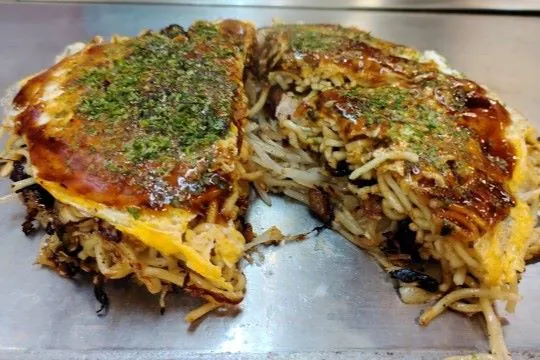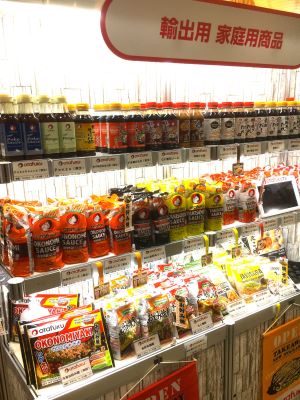Not only sushi and ramen, but also representative of B-class gourmet “Konamon” is gaining popularity overseas Otafuku sauce is exported to 50 countries, and there is also a Japanese-owned delivery store in NY (1/4) | JBpress )

Otafuku Sauce is exported to 50 countries, and there is a Japanese-owned delivery shop in NY
 Okonomiyaki is gradually gaining popularity overseas.
Okonomiyaki is gradually gaining popularity overseas.
Go to gallery page
“Japan’s Food Export Expo” was held at Tokyo Big Sight in late June. Approximately 19,000 visitors, including overseas buyers, attended the event over the three days, and it was a great success. In one corner of the venue, where various Japanese foods such as fresh produce, sake, and matcha were displayed, “Frozen Okonomiyaki” was displayed. was on display. This is the booth of Otafuku Sauce, headquartered in Hiroshima.
When I asked the staff about it, they said that in New York, USA, it is cooked in a microwave oven. Is “konamon” loved overseas? I tried to find out.
 “Japanese Food Export Expo” held in June this year
“Japanese Food Export Expo” held in June this year
Go to gallery page
New York with okonomiyaki and takoyaki specialty stores
In New York, the world’s largest Japanese food festival called “Japan Festival” is held 12 times a year with a total of 150,000 visitors. This is an event that allows New Yorkers to enjoy Japanese culture, from Japanese food to art and entertainment.
More than 15,000 people gathered at the Chelsea venue in July this year, not only Asian but also local people of various races. In addition to popular booths such as rice balls and ramen, there were also long lines at booths dedicated to food culture such as okonomiyaki, takoyaki, and yakisoba. At the same festival, “KONAMON FES New York” is scheduled to be held in September, focusing on Konamon.
Festivals are not the only place where Konamon culture spreads. In addition to okonomiyaki and takoyaki specialty stores in New York, a Hiroshima-style okonomiyaki delivery service has also appeared for the first time in New York.
The owner is a woman from Hiroshima City. After returning from New York, where she studied abroad, she got a job in her hometown. She has been selling okonomiyaki at event stalls for more than 10 years.
“Through okonomiyaki, we strive to contribute in our own small way to creating a New York food community where people can live happy, joyful, and harmonious lives through what they eat,” the website says. A message is posted.
The fact is that the level of awareness of flour menus such as okonomiyaki, takoyaki, and yakisoba is still low compared to sushi, tempura, and ramen, but it means that the soil for delivery has been created. A writer living in New York talks about the popularity of Konamon.
“Okonomiyaki is written in Okonomiyaki. You can see Japanese pancakes and Japanese cabbage cakes in supermarkets. Frozen products of Otafuku sauce are also sold. It contains sauce, bonito flakes, and green laver, and the cooking method is 4 minutes in the microwave.
At festival stalls, both okonomiyaki and takoyaki are extremely popular, and long lines form. When I talked to people in line, I heard that they traveled to Japan and ate it in Osaka and Hiroshima and fell in love with it. They said that it was fun, that it was cheaper than sushi, and that it was filling.”
Although it still has a minor existence, the taste and culture of Japanese B-class gourmet seems to be steadily spreading.
